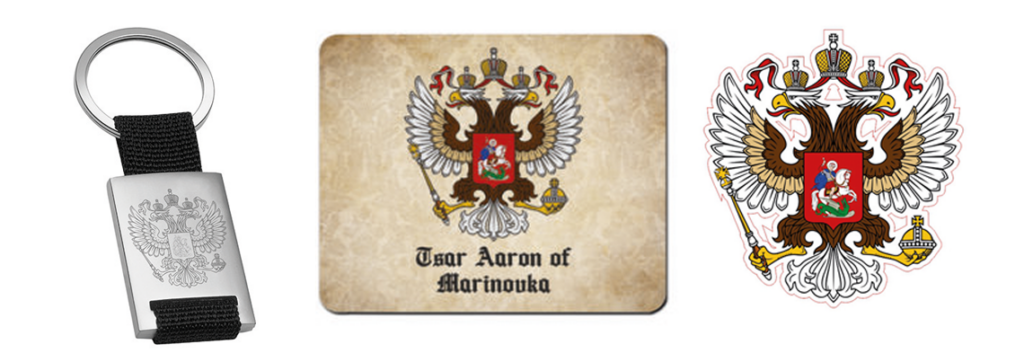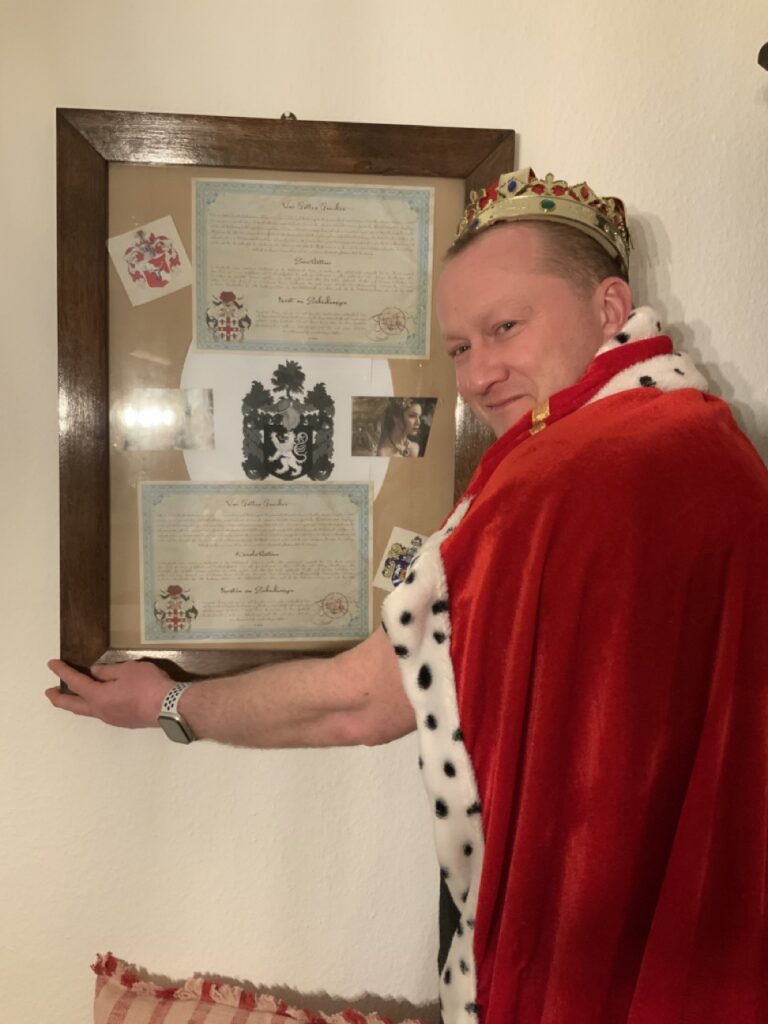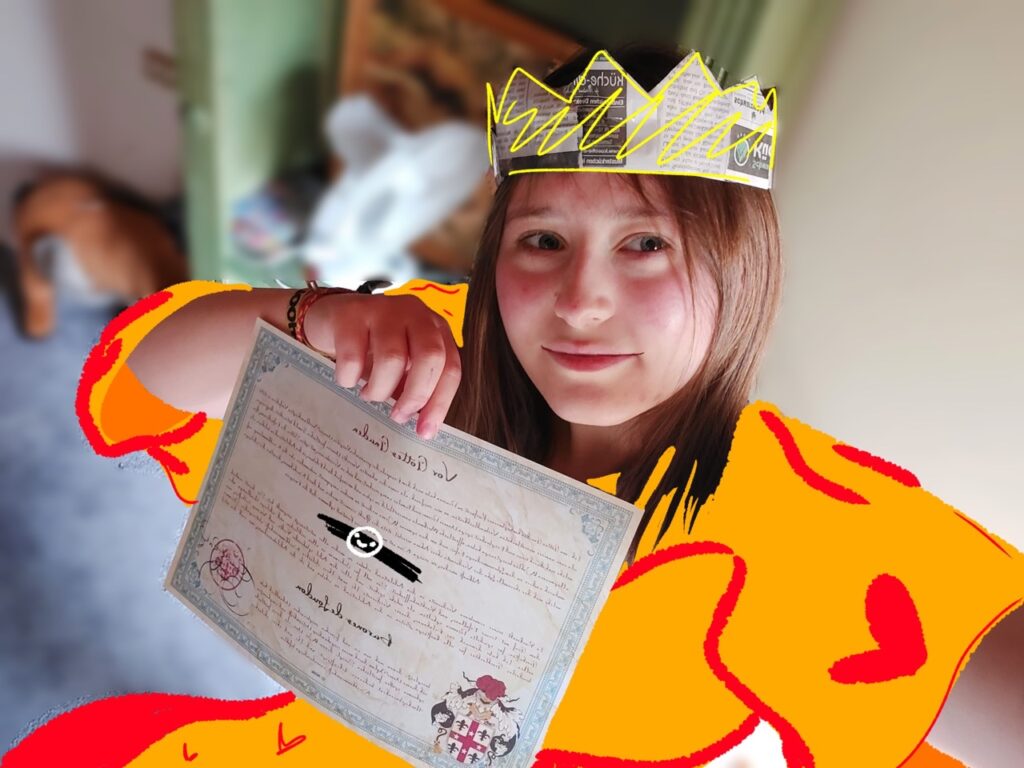Description
Shogun
Shōgun, roughly "barbarian-subduing great general"/"generalissimo") was a Japanese military title for leaders from the warrior nobility of the samurai from the 12th century until 1867. Originally, a Shōgun was roughly equivalent to a European duke and was appointed to this position, which carried special powers, only temporarily in emergencies when fighting the emishi. After the end of the Heian period, Minamoto Yoritomo succeeded in having this title hereditarily transferred to him by the emperor in 1192.
The Shōgunat initially referred only to the household, later also to the administrative apparatus of the Shōgun. In Japanese, it referred to itself as kōgi ( literally, official affairs, i.e., "central government"); from the 19th century onward, it was referred to as bakufu (literally, tent government in the sense of "military government") as a distinction from the imperial court, which was increasingly seen as sovereign. The bakufu remained the country's dominant political center until the defeat of the Tokugawashogunate in the Boshin War in the course of the Meiji Restoration in 1868, when it was abolished, along with the state of the estates that had existed until then.
Japanese nobility
Until the 5th century AD, the nobility in Japan was only a loose association of soil-dominating clans. In the 6th century, the central imperial power of the Tennō granted hereditary titles of status to some of the clan heads. The actual authority of the clan chiefs was thus delegated and legitimized by the state.
In the 7th century, in the course of the establishment of the strongly Chinese-influenced Ritsuryō system, the nobility criterion of birth was replaced by administrative ability. By provincial law in 701, the nobility of birth was replaced by a merit nobility of civil officials (kuge). Under the leadership of this merit nobility, which was increasingly concentrated in the capital Heian-kyō (now Kyōto), associations of landed warriors and estate administrators from the provinces increasingly displaced the civil nobility from power until about 1200. The so-called sword nobility (Buke, especially samurai, Daimyō, Shōgun) then ruled Japan until 1868, leaving the Tennō with only high priestly, culture-preserving, and legitimizing duties. In 1884, in the Meiji Restoration by (or at least on behalf of) the imperial power, civil nobility and sword nobility were combined into a unitary nobility (Kazoku), and the samurai rank as such was abolished. By the law of July 7, 1884, the nobility was graded into five classes according to the British peerage system, but Chinese titles were used for them. Unlike the rule in force in China, it was hereditary indefinitely according to the principle of first-born, so that the younger sons of a titled nobleman were without nobility predicate throughout their lives and the heir during the lifetime of their father. After World War II, the nobility as an institution was eliminated by the 1946 Constitution. Only the imperial family itself remained.
Discover our great and unique accessories that will perfectly complete your noble title

When you order an accessory, you will automatically receive all ordered certificates printed in a gift folder together with the printed booklet "Noble Society - My Noble Title".
You can order our accessories directly together with your noble title. In each noble title you will find the option "Shipping as PDF" or "Printing and shipping". Please choose print, then a menu will open where you can choose more items
Golden ID Card
The ID card has the size of a business card and is made of aluminum. The front is printed in gold color and contains your title and coat of arms. A wonderful accessory that should not be missing in any wallet of a nobleman. Use the ID Card for example also to "identify" yourself in the hotel or restaurant.
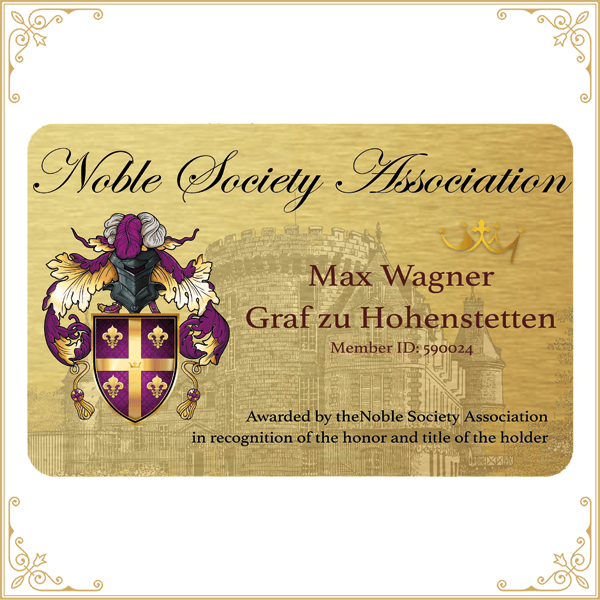
Honorary membership in the Noble Society Association
We confirm your honorary membership with a magnificent certificate. The membership does not include any subsequent costs, with the one-time contribution it is valid for life.
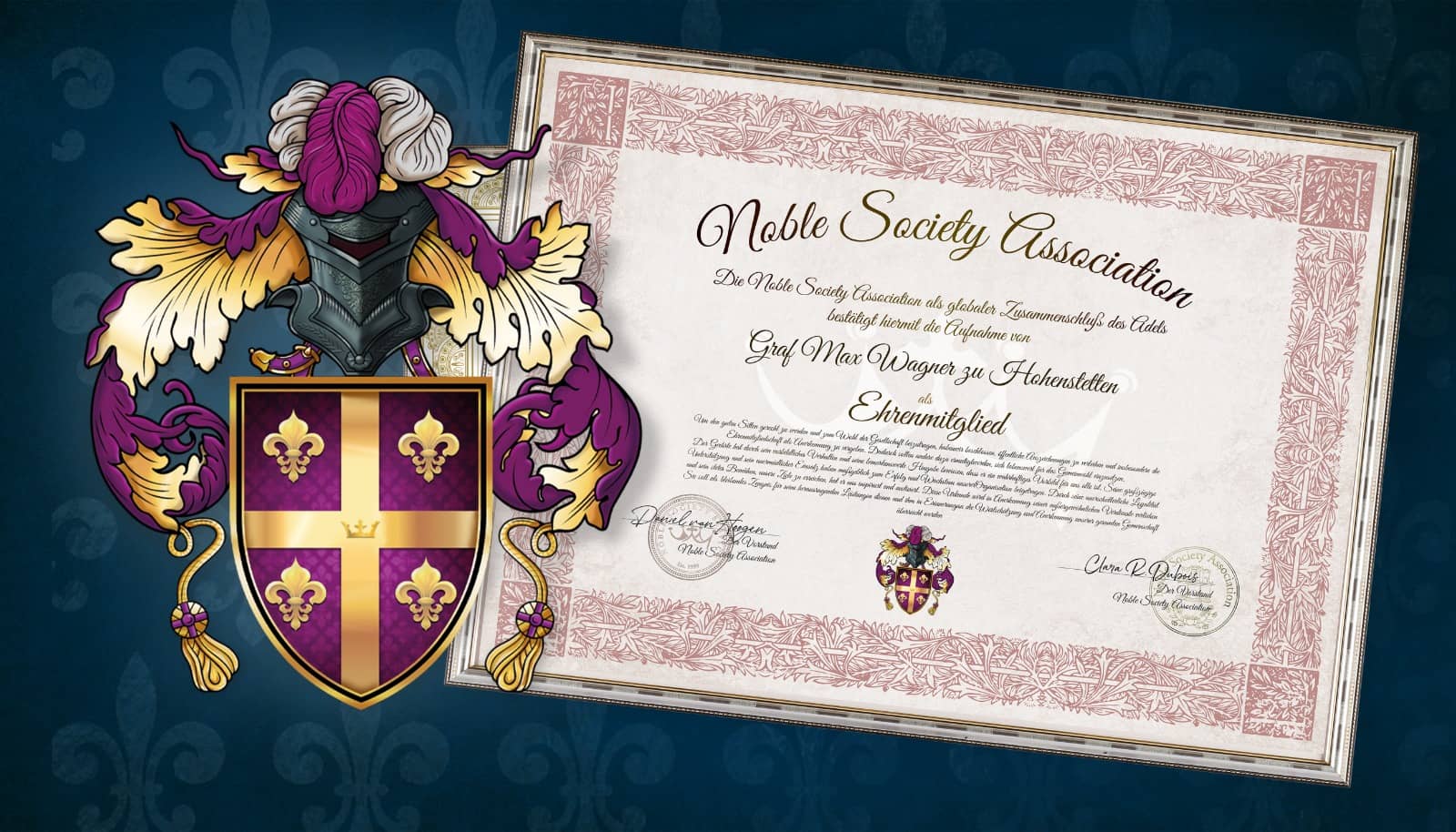
Coins - your own currency
On one side of the coins is shown the value. For the silver coins this is 1 thaler, for the gold coins 10 thalers. On the other side you will find prominently your coat of arms and your name and title.
Detail:
The coins have a diameter of 30mm and are silver or gold color, high gloss. Both sides are engraved by us with a high quality special engraving machine.
The value of the coins in Irish lord titles is taken from the medieval currency of Ireland:
1 Coróin corresponds to 5 Shillings = 1 Crown
1 Sabhran equals 20 Shillings = 1 Sovereign
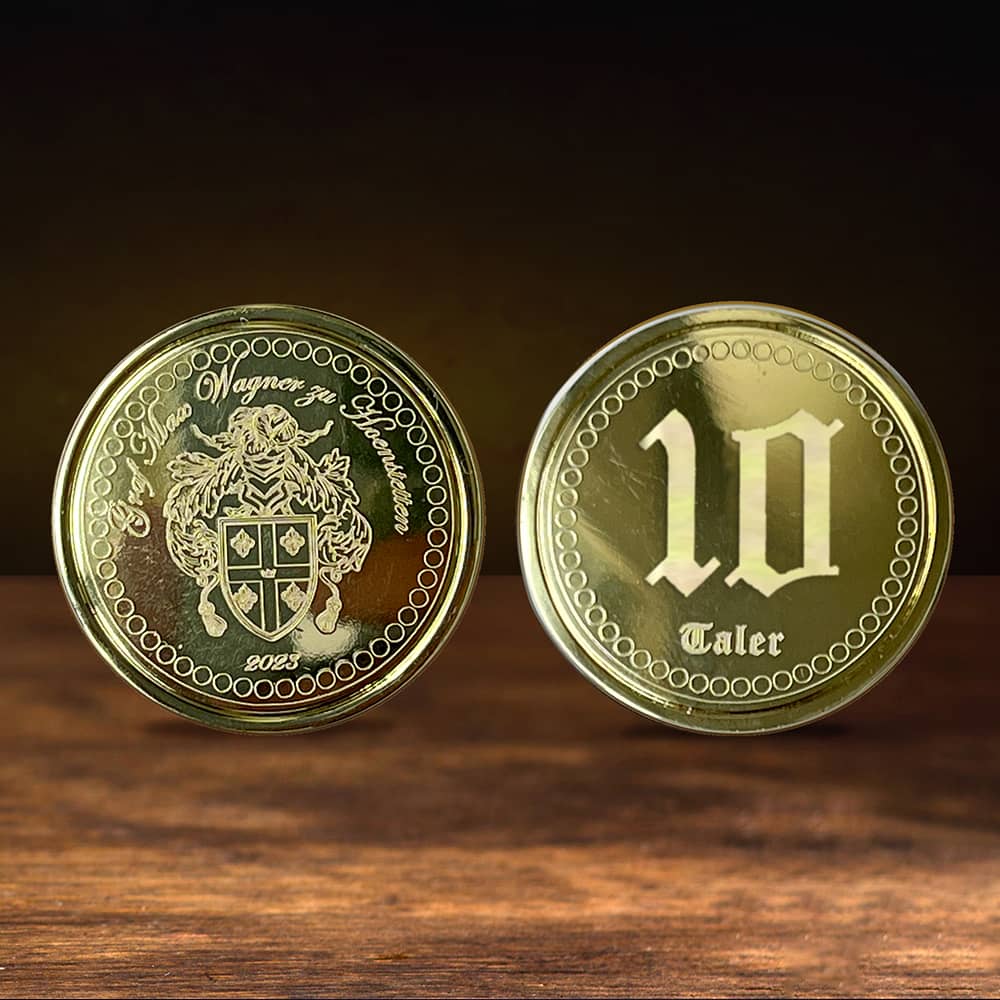
Your own wine
You will receive either one or two bottles of red or white wine with your very own personal label. On this you will find your coat of arms, as well as your title and name. You will receive matching wine glasses engraved with your title, coat of arms and name.

Your coat of arms on stretcher frame
Coat of arms on stretcher frame is 60cm x 60cm and an incredible eye-catcher in the living room or office.
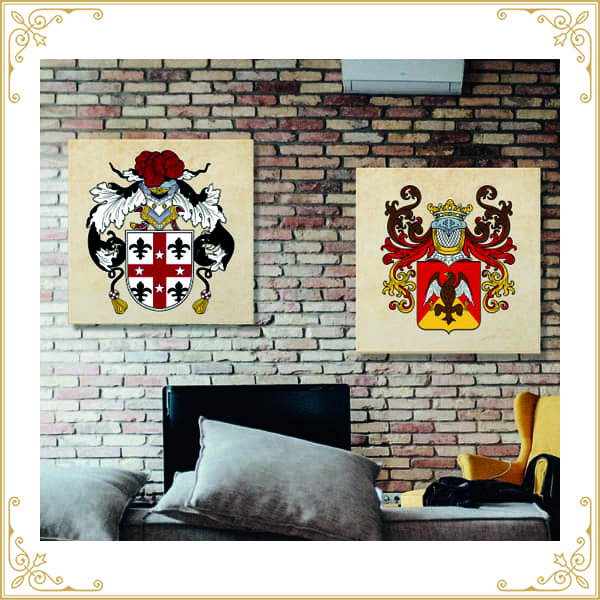
Embossing pliers with coat of arms
With the embossing pliers you can easily and stylishly emboss your stationery with your coat of arms
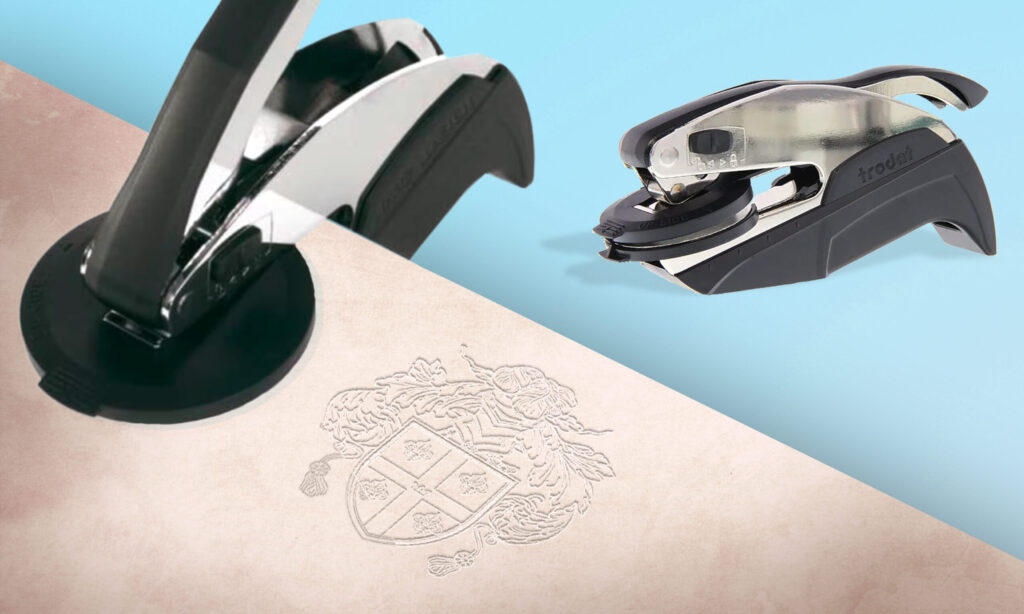
Self inking stamp with coat of arms
The stamp colors itself via the built-in ink pad. With this you can effortlessly stamp your coat of arms on your documents

Small set with mouse pad, keychain and bumper sticker
This set includes a mouse pad, a keychain and a bumper sticker, all printed or engraved with your coat of arms.
Details:
- Key ring: size about 8.5 x 3.4 cm, material: zinc alloy metal and textile label, high quality laser engraving.
- Car sticker: This sticker comes in the outline of your coat of arms and is specially processed so that it is resistant to outdoor use.
- Mouse pad with coat of arms: Textile mouse pad, 230 x 190 mm, thickness 5 mm
